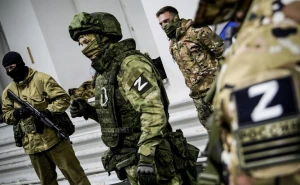
June 12-19 live war map: Russian forces push towards Pokrovsk, sacrificing other fronts
The intensity of fighting has decreased in many frontline areas, except for Chasiv Yar and the Pokrovsk-Toretsk direction, where Russian forces have concentrated significant troops to achieve maximum results
Post-Avdiivka front continues to expand
After capturing Avdiivka, Russia's Center group is spreading across the Donetsk region towards key cities like Pokrovsk, Toretsk, and Kostiantynivka with Kramatorsk. Currently, the Ukrainian Armed Forces struggle to stabilize the front line, now over 50 km long. The General Staff reports a force ratio of 1 to 3, not in Ukraine's favor. About 70,000 Russian troops, organized into at least 7 brigades and several regiments and battalions, are concentrated here. This manpower shortage is a major reason for the Ukrainian troops’ gradual retreat.
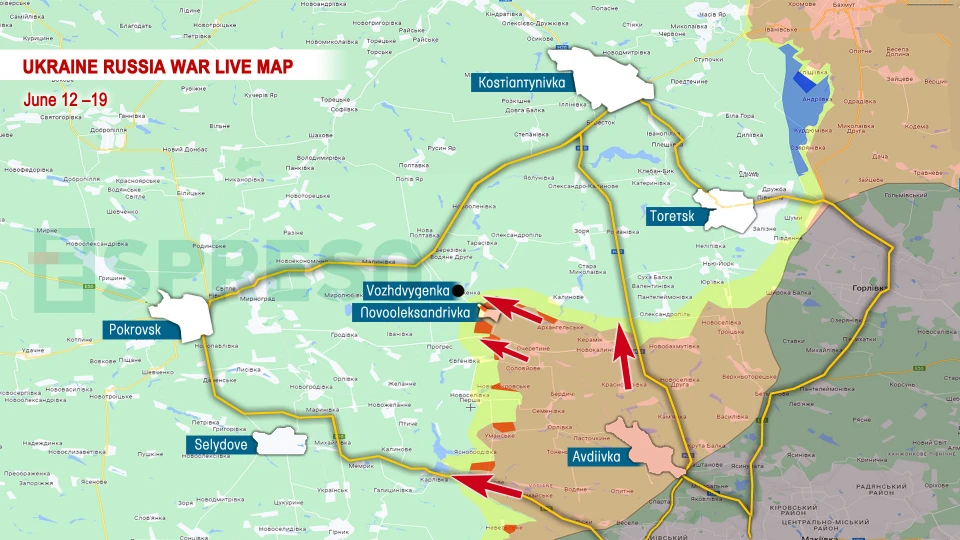
Within a week, the Russian army nearly completed the occupation of Novooleksandrivka and launched an offensive on Vozdvyzhenka, the last village before reaching the critical logistics route Pokrovsk-Kostiantynivka. Securing this route is a key priority for the Russians, offering substantial advantages for further expansion.
In Sokil, the Ukrainian Defense Forces repelled all attacks, including those bypassing the village from the north. However, the Russians occupied Novopokrovske, enabling attacks on Sokil from the south. Simultaneously, they targeted Novoselivka Persha, the last major Ukrainian stronghold in this area on the left bank of the Vovcha River.
The Russian army is expanding its control near Umanske and has surrounded Yasnobrodivka on three sides. A campaign to push the Ukrainian army out of the village to the other side of the river is imminent.
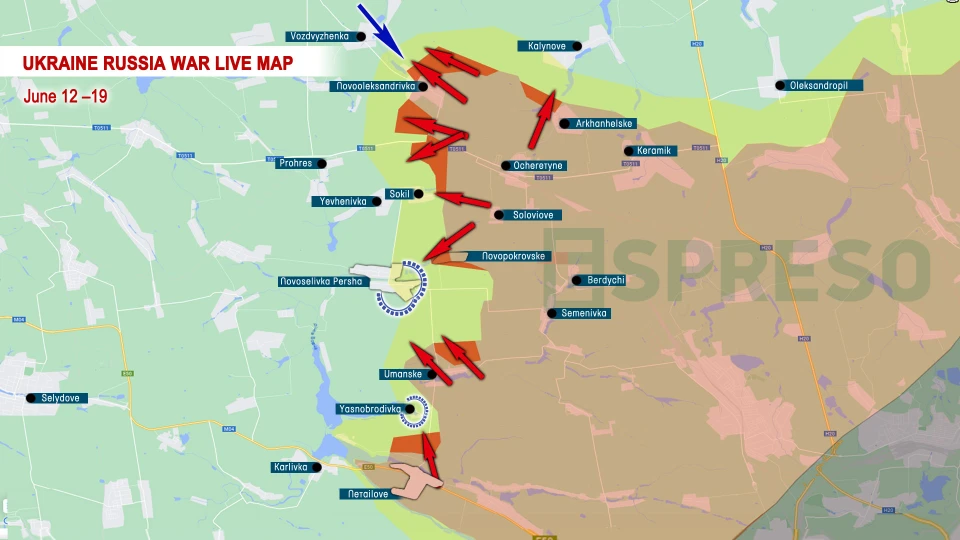
Krasnohorivka and the southern front
To the south of Avdiivka, Russian advances are weak. The main focus areas are Krasnohorivka, Heorhiivka, and Vuhledar. In Krasnohorivka, intense street battles continue, with control of some houses changing hands, but the Armed Forces have mostly held their ground.
In Heorhiivka, the Russians pushed a large number of armored vehicles. The attack was so fast that the Defense Forces couldn't destroy all of them, allowing some to reach the village's edge. They then took photos and loudly claimed to have captured the area. However, the Ukrainian Armed Forces quickly counterattacked, forcing the invaders to retreat.
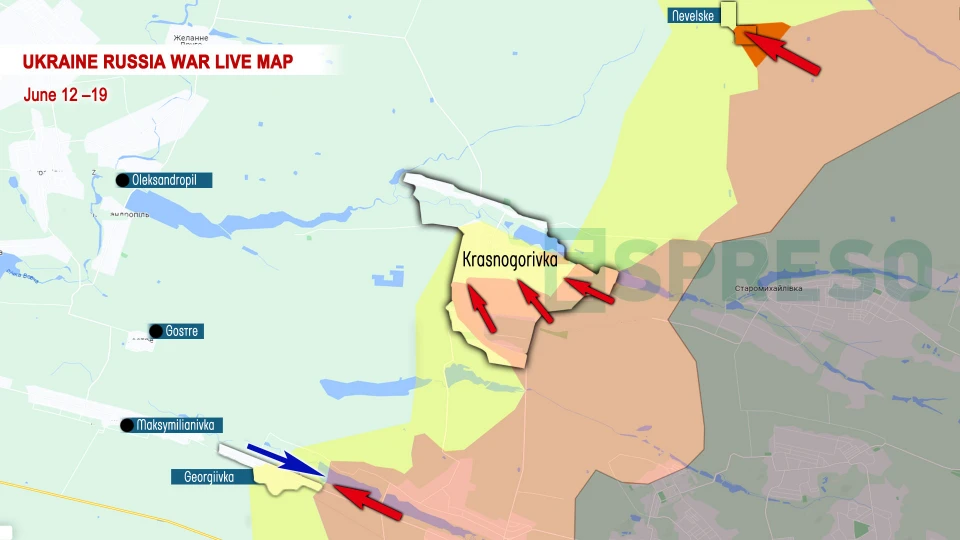
To the north of Krasnohorivka, the enemy entered Nevelske, a village the Defense Forces had held for two years. Unfortunately, this part of the front might see some unpleasant changes soon.
Over the week, the invaders made no significant progress in Vuhledar, nor in the Berdyansk and Orikhiv directions – in Robotyne and Urozhaine.
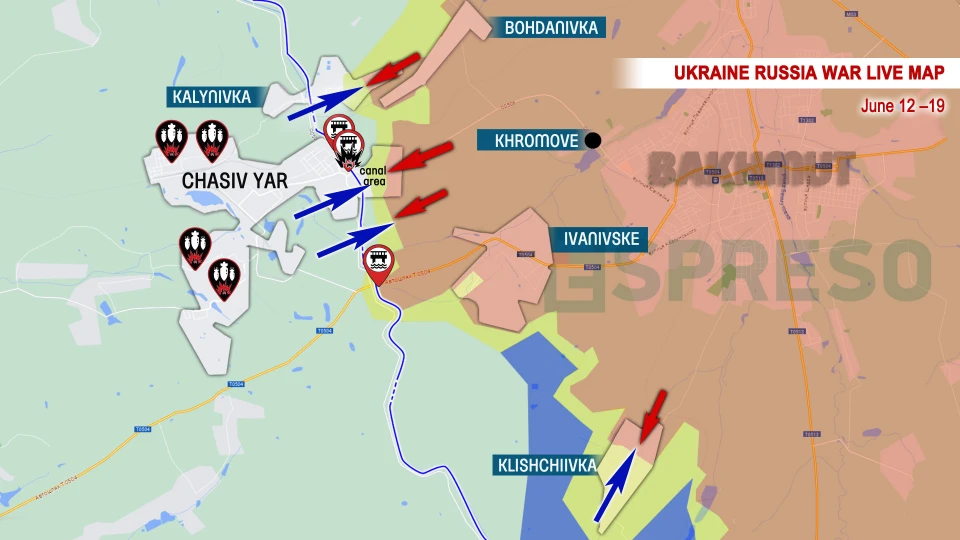
City battles for Chasiv Yar
Paradoxically, after the Russians took half of the Kanal district, they couldn't use aerial bombs against Ukrainian troops in the area, allowing the Defense Forces to maintain the front line along Zrazkova Street. The Russians' attempts to flank our defenders from the north through Kalynivka or the south through the Novyi district failed, as did their offensive on Klishchiivka, where the Armed Forces counterattacked and regained some positions in the village. Earlier, the Russian Air Force had moved some troops from this area to the Kharkiv region.
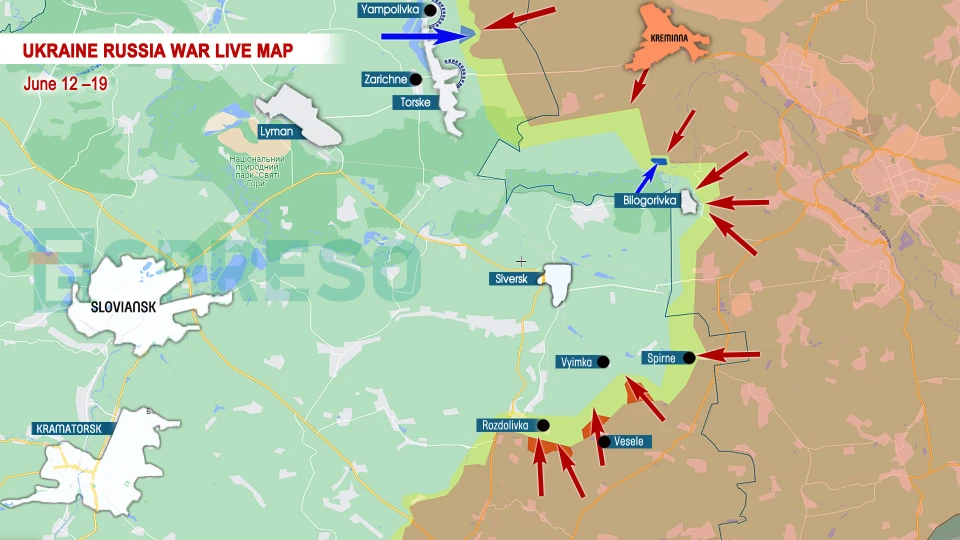
Siversk front is active again
The Russians have been relentlessly storming Bilohorivka for over two years, but our soldiers are holding their ground. However, a bit further south, the invading Russian troops unexpectedly advanced 2 km toward Vyimka, the gateway to Siversk. Near Rozdolivka and Vesele, the enemy managed to "level" the front over a 5 km section. After these changes, the Armed Forces stopped the Russians' advance and seemed to stabilize the front.
Meanwhile, north of Siversk, the Azov soldiers, who've been fighting in the Serebrianka Forestry for a long time, managed to repel the enemy over an area more than 1 km deep and 2.5 km wide.
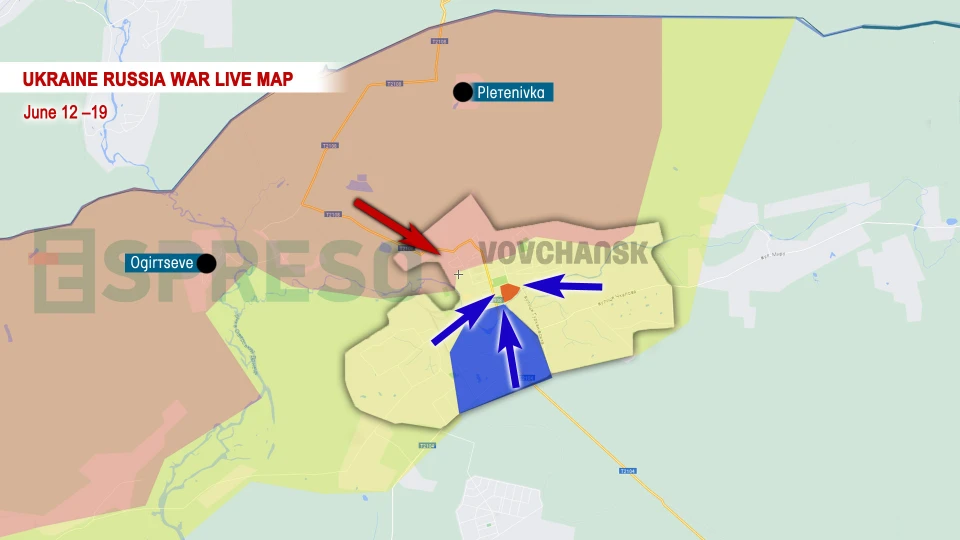
Vovchansk front
Despite no success near Vovchansk or Lyptsi, the Russians continue to bring reinforcements from other front areas, including Klishchiivka, Kherson region, and Zaporizhzhia. They've started digging in 3-4 km from Vovchansk, forming a defensive line. This indicates they're still planning to create a bridgehead here, diverting additional resources from the Armed Forces. Currently, they manage to do this. The Ukrainian Armed Forces are counterattacking, which requires more resources. Our heroes pushed the invaders back from several central streets, then blocked several hundred workers at the Aggregate Plant. Airstrikes are being used to force them out without risking Ukrainian military lives.
In the Lyptsi district, the Armed Forces continue pressuring the Russian troops in Hlyboke, but there have been no significant territorial changes so far.
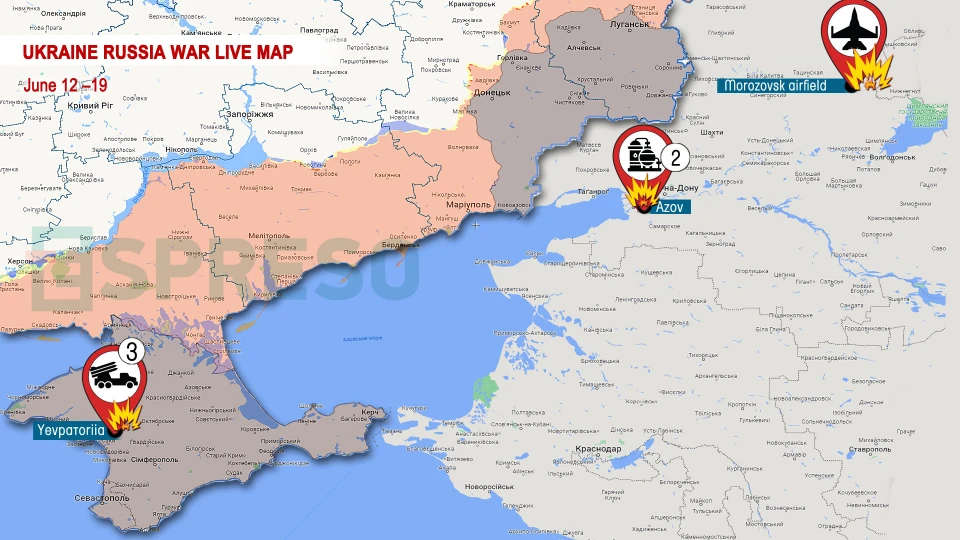
Crimean air defense, Rostov aircraft, and oil
The Ukrainian Armed Forces launched a powerful attack on Crimea, taking out two S-300 air defense systems and one S-400. In response, the Russians claimed they moved the newest S-500 system to Crimea. This system is so new it hasn't even been tested yet, showing a deep crisis in their air defense on the peninsula.
At least 70 of our drones hit the Morozovsk airfield in the Rostov region, destroying at least three Su-34 aircraft. Additionally, explosions hit the large Rostov oil depots Azovskaya and Azovnefteprodukt, which together house 22 fuel tanks.
The maps were made using information from the Ukrainian Armed Forces' General Staff and other verified sources. However, they are not fully accurate and only roughly indicate trends in the war zone.
- News











